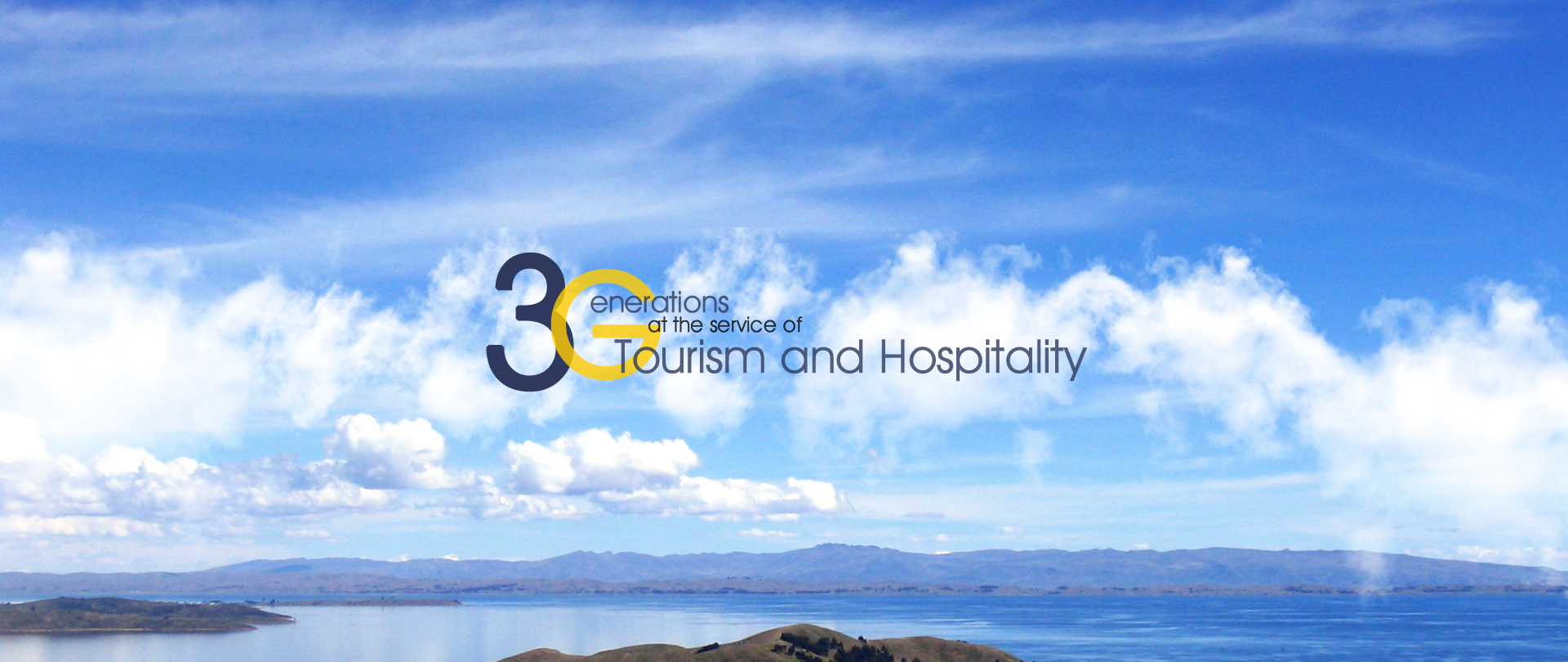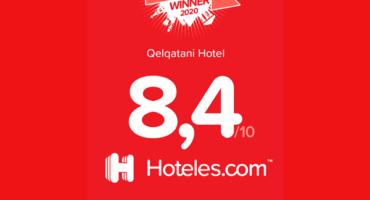
Grupo Titicaca - Consorcio Turístico Hotelero, Puno - Perú / Hotel Tourism Consortium, Puno - Peru
T (51-51) 951291041
Email: info@grupotiticaca.com
Grupo Titicaca / Titicaca Group
Dirección / Address: Jr. Tarapacá 355, Puno - Perú
About us
We are a Business Group, founded on November 4th 2008. The Titicaca Group is made up of various family businesses, all related to the tourism industry, and directed by professionals with more than 30 years of experience in the hotel and travel agency sectors. The work of these individuals is based around the fundamental goal of taking a different approach to offering services; treating all of our clients in a warm and personal manner, and contributing to the promotion of Puno’s principal attraction, Lake Titicaca and its surrounding areas.
Vision
To become a leader in Family Business Groups, as well as be recognized in Puno, as well as throughout our country for our contributions to the furthering of the development of our surroundings.
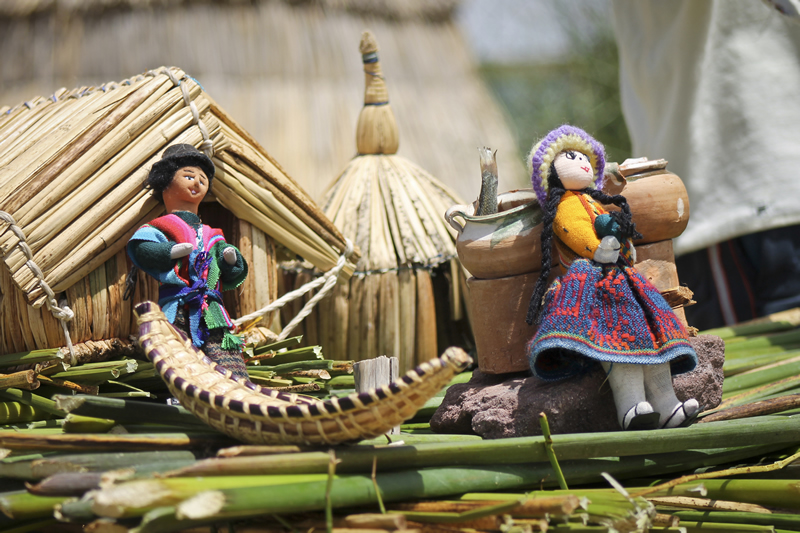
Currently, The Titicaca Group consists of 3 companies dedicated exclusively to the tourism industry; with more than 50 professionals, all working to ensure that even the slightest details of our services really are distinctive and memorable.
Mision
We are a corporation dedicated to offering distinctive and better tourism-related services; meeting the needs of our clients in a more personal way, and being flexible to the needs of travel agencies, public and private businesses, tourists, and national as well as international business travelers. These services start by offering a warm and welcoming environment for our foreign as well as local clients; always seeking to promote our main attraction, Lake Titicaca and its surrounding areas.
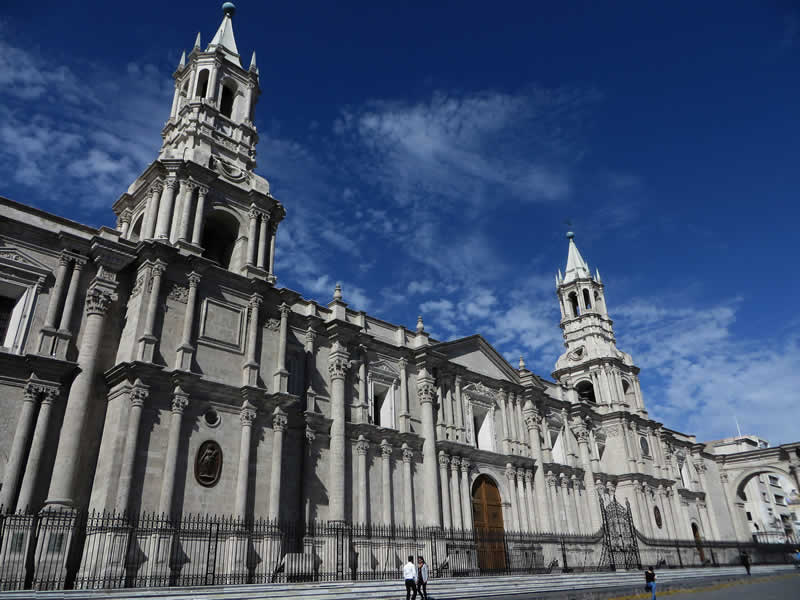
At the same time, we seek to offer the most reputable information about the main attraction of Puno, Lake Titicaca. For those interested in obtaining more information about this natural wonder, we can provide a variety of information, hopefully sparking a desire to experience the lake firsthand. In addition, we work to promote Lake Titicaca throughout the world as one of the few remaining natural wonders, and taking into consideration its preservation today and in the future.
Our Philosophy and Values
Satisfaction, Promotion, Fulfillment and Development of our clients, attractions, and human and business resources, respectively.
- Commitment to Our Culture and Surroundings.
- Honesty and Responsibility.
- Respect and Humility.
- Sense of indebtedness to our clients and families.
- Teamwork and Enthusiasm.
- Security and Care Service-based Attitude and Dedication.

Hotel...
Travel and Tourism Agencies...
International Awards...
We promote National Tourism...

Polly Vera De Gutierrez

Ariana Medina

Visitantes de México
News about Grupo Titicaca
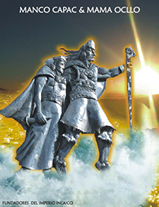
According to Incan mythology, the founders of the Incan Empire emerged from Lake Titikaka. The Incas worshipped the Sun God, Wiracocha, as the creator of the universe. That is why the lake is considered to be a sacred place with great spiritual power, with astrong magnetic attraction and cosmic energy accumulated in the body of water.
Given the lake’s location at the considerable altitude of 3,800 meters above sea level, the beauty of its scenery, its unique characteristics that maintain an ecosystem that is rich in natural resources, its cultural and historical riches, and the friendly population that preserves its customs and traditions, this natural resource is a true attraction for locals and visitors.
The author of this document was born on the shores of Lake Titikaka. He is a specialist in climatology and hydrology, an author, and the co-author of various documents. He has also participated in various international scientific expeditions. All of this has made possible the creation of this document, which summarizes the principle questions that we all ask regarding this marvelous natural resource that Peru and Bolivia share for all of humanity.
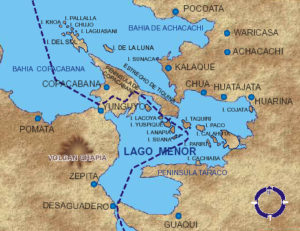 The lake’s origins are tectonic. During the Quaternary Period millions of years ago, strata subsided, forming a tectonic trough that was covered with glacial water and precipitation.
The lake’s origins are tectonic. During the Quaternary Period millions of years ago, strata subsided, forming a tectonic trough that was covered with glacial water and precipitation.
Initially, the water level was 60 to 100 meters higher than it is today. It has been given different names, such as Lake Ballivian, Michin, Tauca, and ultimately Titikaka (Leveau et al, 1984).
From a latitude of 14ºS, the Andean mountain range splits into the western and eastern mountain ranges, forming a very extensive, flat, and high region between 3,700 and 4,500 meters above sea level, giving rise to the Northern, Central, and Southern High Plains, which occupy part of the territories of Argentina, Bolivia, and Peru.
Lake Titikaka is found in the Northern High Plains, Lake Poopo is in the Central High Plains, and the arid salt-mining regions of Uyuni and Coipasa are in the Southern High Plains. Lake Titikaka is found within a closed basin with an area of 58,500 km , of which 8,500 km is the lake.
Lake Titikaka is the highest navigable lake in the world. It is the 21 st largest lake in the world, and the second largest lake in South America, after lake Maracaibo. The lake is divided into two lake basins: The Greater Lake, or Chucuito, and the Smaller Lake, or Huiñaymarca. These are connected by the Tiquina Strait, which is 850 meters wide and 21 meters deep.
 The system as a whole is closed (endoreic). Rain is the only incoming source of water and heavy evaporation is the phenomenon that maintains an almost constant water level.
The system as a whole is closed (endoreic). Rain is the only incoming source of water and heavy evaporation is the phenomenon that maintains an almost constant water level.
Bay of Puno
The only outlet for water is found at the extreme southern end of the lake, giving rise to the Desaguadero River. The riverbed is 3,804 meters above sea level, and the water empties into Lake Poopo, which is in Bolivia at 3,686 meters above sea level.
The RAMSAR Convention has declared Lake Titikaka to be a RAMSAR site, for being a resource that serves as a biodiversity habitat that is very important in the biological chain of many species, and especially birds.
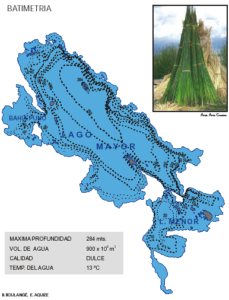
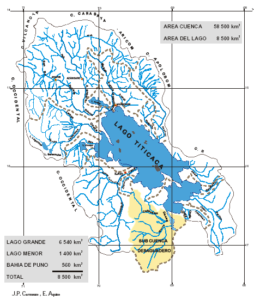 The basin and the lake are in a geographical region that is rich in hydric resources, and where there are permanent and seasonal rivers. The permanent rivers average annual flow, in m /sec, is:
The basin and the lake are in a geographical region that is rich in hydric resources, and where there are permanent and seasonal rivers. The permanent rivers average annual flow, in m /sec, is:
The rivers and precipitation provide 52% and 48%, respectively, of the water that maintains the lake’s water level at an average of 3,810 meters above sea level.
![]()
The average temperature of the water is 13ºC, varying between 11ºC in the autumn and winter and 15ºC in the spring and summer. Given the lake’s extent and large volume of water, its thermo-regulating effect in the region is vital for supporting local biology, considering that there is variation of up to 3ºC on the lake shores, and that the variation decreases with distance and altitude.
The lake’s waters never reach freezing temperatures. Climate change due to global warming will certainly have effects in this region. The magnitude of those effects should be monitored to understand the variations in and effects on the climate of the South American continent and the planet.
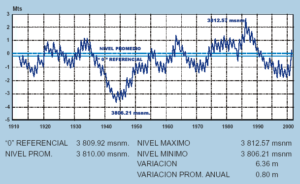
Because the lake is in a closed basin, it behaves as an enormous rain gauge (pluviometer) for precipitation that falls in the region and over the lake.
These levels are measured in a fixed, metallic station installed at the Port of Puno, which has a “0 reference” mark, whose benchmark is 3,809.92 meters above sea level.
Daily measurements have been recorded since 1912, providing the following information in meters above sea level are:
Maximum level 3,812.57 April 1986
Minimum level 3,806.21 December 1943
The variation in the water level over the past century was 6.36 meters. Each year, minimum levels are recorded in december and maximum levels are recorded in april.
The average annual variation is 0.80 meters, which varies with the volume of precipitation received each year (refer to the graph).
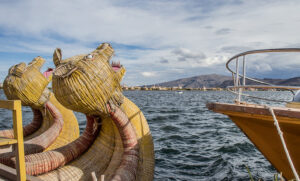
Despite its large size, the lake maintains a very fragile equilibrium that doesn’t allow its waters to be diverted for use outside of the basin (many large projects have tried to move the water toward the slopes of the Pacific Ocean, Atlantic Ocean, or the South) without running the risk of causing serious ecological damage in the region. Consider the following information about the lake’s water:
95% is lost through evaporation
3% is filtered through aquifers
2% leaves through the Desaguadero River.
The Desaguadero River is the lake’s only outlet, with a highly variable average annual flow of 10 to 12 m /sec. There are periods of days, months, or years in which it behaves like a tributary and there have been years in which it brought more water into the lake than it took out, especially when the lake’s water level was low, or when there was strong and persistent precipitation in the upper part of the Callacame and Maure River basins, which flow into the Desaguadero River, very near its mouth in the lake.

Analyses of the lake’s water have been conducted by researchers on different dates and at different sampling sites, and have yielded variable results with approximately 1 gram of salt per liter of water, which qualifies the lake as a freshwater lake.
The lake population sometimes uses the water directly for drinking, especially the water in the Greater Lake. As a reference point, consider the following results of some analyses.
- Neveau-Lemaire 1903 1.030 grs. sal/litro
- PosnasKy 1908 0.952
- Gilson 1937 0.775
- Loffler 1954 0.780
- Hegerwald 1974 - 77 0.924
- Carmouze 1977 0.801
- Ph promedio 8.5.
The climate of the geographical region is cold and semi-arid. It is cold because it is found more than 3,800 meters above sea level, and semi-arid because it has a dry season ( autumn and winter ) and a rainy season (spring and summer).
The average temperature is 7ºC, with a maximum temperature of 15ºC and a minimum temperature of -1ºC. The total average annual precipitation is 650 mm received over 120 days of the year. The average relative humidity is 50%. The atmospheric pressure is 646 milibars, and there is a high incidence of solar radiation, with a daily average of 515 Calories/cm.
Since this region is located between other regions (hot and humid toward the east or Atlantic, desert-like toward the west or Pacific, and open to the south or Antartic), the climate is highly variable and influenced by any atmospheric occurrence in these large geographic regions. Climate-related risks are very high for agricultural production and livestock.
The climate above the lake is a little warmer and less variable. The average temperature is 8ºC, varying between a maximum of 16ºC and a minimum of 0ºC.
Some pictures about biodiversity.
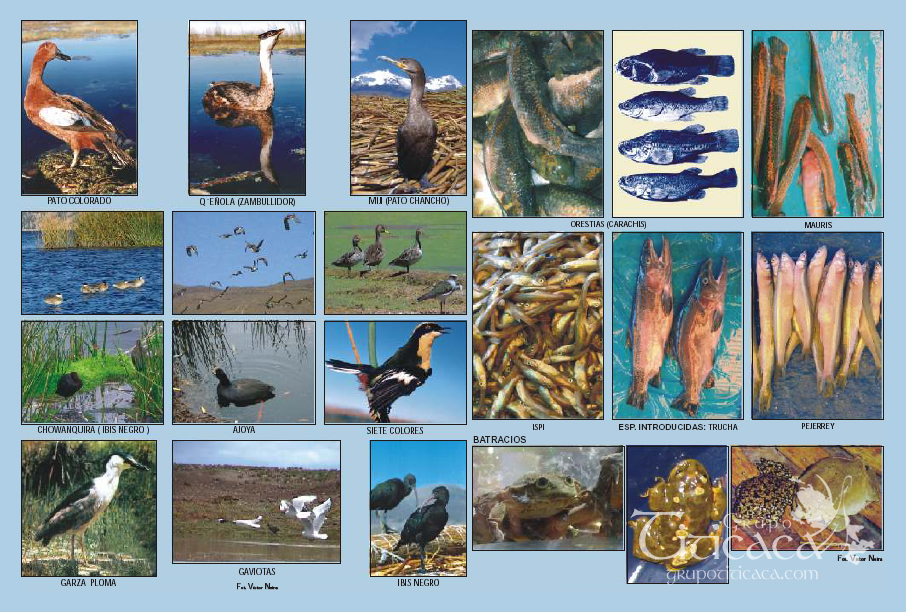
La navegación en el lago TiticacNavigation on Lake Titikaka dates back to the Uros, who were the first navigators, using reed rafts to fish and communicate with each other. The first vessels for passengers and cargo, which began true navigation on the lake, were the YAVARI and YAPURA steamships, which were ordered to be built in England in 1862 by Mariscal Ramon Castilla’s government.
These vessels were sent in pieces to the Port of Arica, and from there transported by train to Tacna. From Tacna, they were sent over land 370 km to Puno on animals’ backs. The steamships were launched on the lake in 1870 and 1871, and began making trips to Yunguyo and Copacabana in 1872.
- Aquize Jaen E. - 1980
Clima de la Cuenca del lago Titicaca. Puno - Perú.
- Boulange B. et Aquize Jaén E. - 1981
Morphologie,hydrographie et Climatologie du lac Titicaca et de son bassin versant.
- Carmouze J.P. et Aquize Jaén E. - 1981
La régulation hydrique du lac Titicaca et l´ hydrologie de ses tributaires.
- Wilson H. - 1964
Lake Titicaca. Verh. Internat Verein Limnologie.
- Dejoux C. y ILDIS A. - 1991
El lago Titicaca - ORSTOM - Francia. HISBOL. La Paz - Bolivia.
- Kessler A. Monheim F. - 1967
Balance hidrológico del lago Titicaca La Paz - Bolivia.
- Monheim Felix - 1956, 1963
Contribución a la Climatología e Hidrología de la cuenca del lago Titicaca. Heidelberg - Alemania
- Richerson P. J Widmer C, Kitwe T - 1977
The Limnology of lake Titicaca (Perú-Bolivia) Univ. California - USA.
- Taylor M., Aquize Jaén E. - 1984
A Climatological energy budget of lake Titicaca. (Perú - Bolivia)
- Meriel Larken - 2006 Lima - Perú
Navigation on lake Titicaca A.C. Peruano Britanica.
Author:
Eleodoro Aquize Jaén
First Edition:
Derechos Reservados
Photographs:
Víctor Neira
Design and Digital Layout:
Arte Creativo
Address:
Jr. Tarapacá 355, Puno - Peru
Mobile: (51) 951-291041
E-mail: info@grupotiticaca.com
Web: grupotiticaca.com

 Español
Español  English
English 